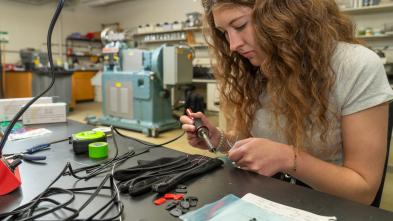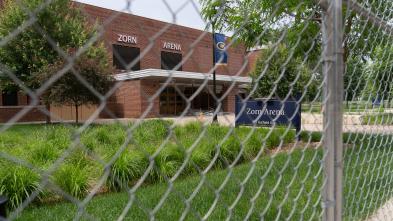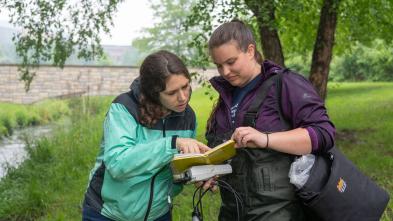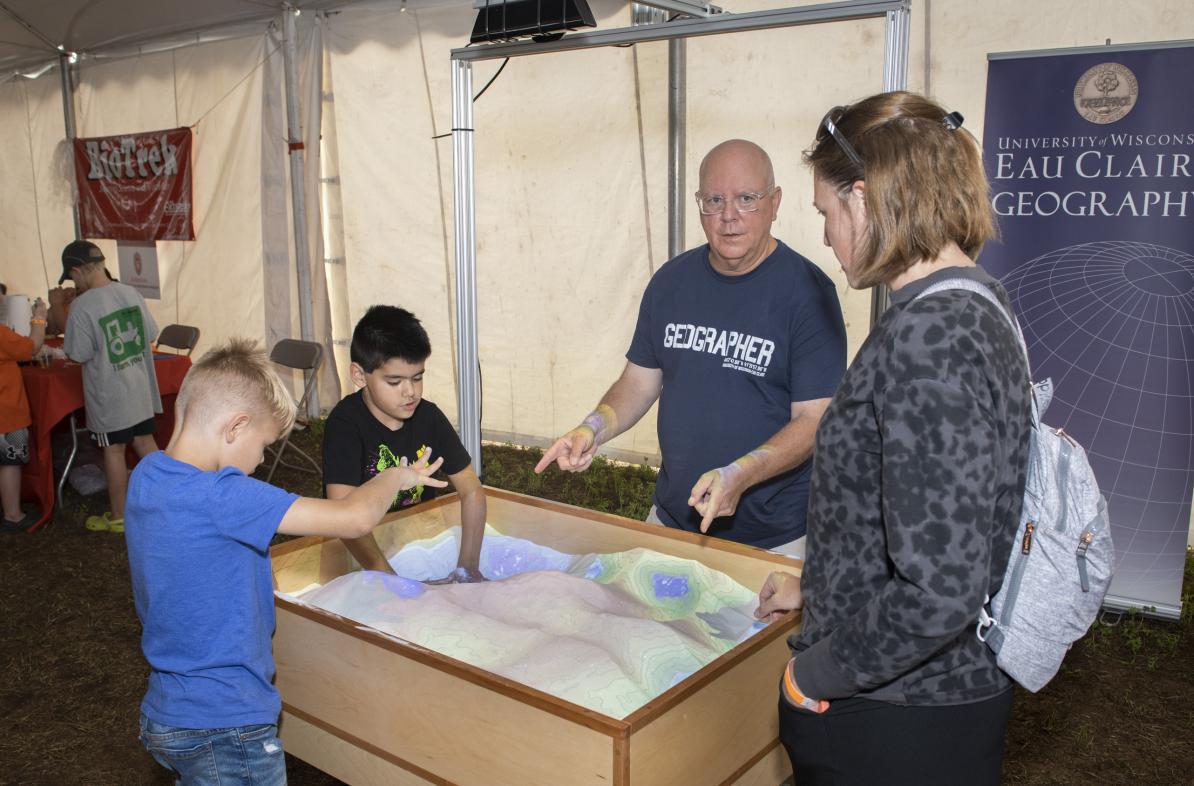
UW-Eau Claire geography faculty and alumni team up with regional experts on NSF grant study
Geography faculty and several alumni of the University of Wisconsin-Eau Claire are part of an interdisciplinary research team of experts that has received a $2.8 million grant from the National Science Foundation that will study the physical geography and glacial geologic history of the Lake Superior basin.
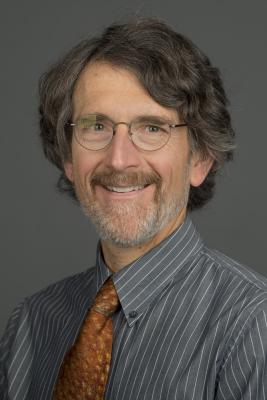
Dr. Douglas Faulkner, professor of geography at UW-Eau Claire, and Dr. Garry Running, professor emeritus of geography, are among seven funded collaborators focused on a portion of the project that supports the work of nine lead investigators at five different institutions. During the fall 2022 semester, current and former Blugold geography and geology students joined the research team.
The initial press release from the National Science Foundation describes the project as “a multidisciplinary approach to better understanding the shaping of this continental landscape. The research team is reconstructing how the geological past of the Lake Superior basin impacts ongoing uplift and tilting of the land surface as well as surface processes including river erosion.”
Faulkner helps to point out the value to the public in making these types of discoveries, how this study can enhance the ways in which Wisconsinites and Minnesotans view and experience these waterways.
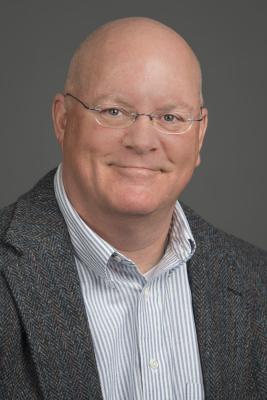
“This research will explain why these rivers have the characteristics they do, why they are these beautiful recreational sites with falls, rapids and gorges, and the like,” Faulkner says. “The types of people who make use of these natural resources are generally the same people who want to understand them better as well. This study will help us all do that.”
Faulkner adds that part of the study will be to determine how the rivers were created, which adds to the overall understanding of why the river systems in the Lake Superior region are different from those found in the Chippewa River region — all heavily influenced by the presence and retreat of glaciers from the region in the last 20,000 years.
Both Faulkner and Running point to the future implications to be examined as well.
“None of the rivers in this region are done adjusting to the changes from the last ice age — they are still changing,” Running says. “If we know how they got to where they are today, we can also start to predict how they will likely change over time.”
Faulkner also emphasizes the potential global impact of the information sought in this study.
“This research will explain the post-glacial changes that took place in this region, but there are other regions still glaciated today that are rapidly deglaciating with global warming,” Faulkner says. “As those glaciers melt away, this work can tell us what future changes we might expect to see in those places.”
Multiple Blugold research connections
Running and Faulkner, along with Dr. Harry Jol, professor of geography at UW-Eau Claire, have collaborated since 2019 with several of the lead investigators on this grant, related to work they did conducting a 10-year study of the Chippewa River basin. That research project and the resulting publication, earned the trio a national award in 2019 from the Geomorphology Specialty Group of the American Association of Geographers.
According to Running, that was around the time the Blugold researchers began working with Dr. Andrew Wickert, associate professor of earth and environmental sciences at the University of Minnesota. He is the University of Minnesota principal investigator and project director for the NSF grant focused on the Lake Superior basin. Wickert is a geomorphologist who approaches geoscience through a quantitative, physics-based lens that he uses to explain how landscapes evolve through time. His efforts brought a group of nine principal investigators together from five different institutions to comprehensively understand the physical geography, geology and glacial history of the Lake Superior basin.
Wickert also partnered with another principal investigator on the project, Dr. Phillip Larson, professor and director of earth science programs and co-director of the EARTH Systems Laboratory at Minnesota State University, Mankato. Larson is a UW-Eau Claire alum who graduated in 2008 with a geography major and geology minor.
The portion of the project involving the UW-Eau Claire team is led by Larson’s group. Running says this research will start by examining the Kettle, Brule and St. Croix rivers, which served as outlets of glacial meltwater from former lakes that resided in the Lake Superior basin when glaciers were in this region. One of the key tools among the arsenal of methods they will utilize to understand these rivers is ground-penetrating radar, a field in which Jol is a “world-renowned expert,” Running says.
“Harry trained Phil Larson in GPR when he was an undergrad in our program,” Running says. “Now Phil is teaching other Blugold alumni who are graduate students in his program at Mankato, two of whom will be collaborating on this new study. Since he’s been there, we’ve actually created quite a little pipeline of students who take their Blugold degree and go on to Mankato to complete a master’s in his program.”
For Larson, this big multi-institution, multidisciplinary study is a rewarding full-circle moment.
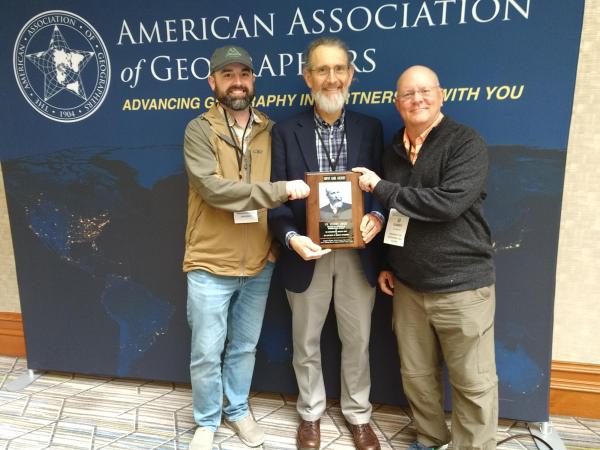
“The way this grant works is that each PI (principal investigator) has their own piece of the big puzzle to focus on, and Garry and Doug will be part of the team focused on my ‘chunk,’ doing fieldwork in the St. Croix River Valley, upper Peninsula of Michigan and on the North Shore of Lake Superior,” Larson says.
In addition to Larson’s former UW-Eau Claire professors on his team, 2022 Blugold geography graduates Abigail Fischer and Hunter Delikowski, now enrolled in the Minnesota State University, Mankato, master’s program, are funded by and will be collaborating on the grant.
“These students have come to our program from UW-Eau Claire and really hit the ground running,” Larson says. “Coming from the same great mentoring relationships I found at UWEC, they had faculty like Garry, Doug and Harry who set them up for great success.”
“Those guys all made such an impression on me, on my path, and showed me the kind of professor I wanted to be,” Larson says. “To have the chance to work with them now as colleagues alongside my own graduate students on a project like this is incredible. It’s the same kind of experiential and applied learning I thought was so cool as a Blugold, and something I knew I wanted to emulate as a professor.”
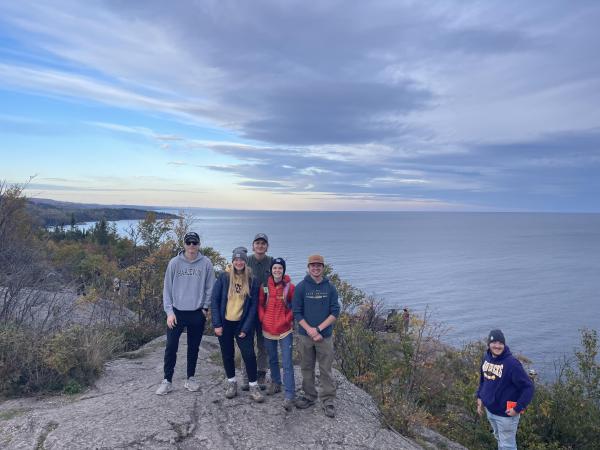
Third-generation Blugold geographers taking on major research
Minnesota State University geography graduate students at the Palisade Head on the shore of Lake Superior. Third from left in black is Hunter Delikowski, and Abigail Fischer is to his right in red.
For Delikowski, this research opportunity is a weighty challenge, but one he looks forward to tackling, knowing he has been so well prepared by the very faculty with whom he will be collaborating.
“It's both exciting and daunting,” he says. “These folks are undeniably experts in their fields, and it can be intimidating to think of how much responsibility and trust they've put in me. However, this is also incredibly exciting. I'm humbled by the respect they have always shown me, especially as an undergraduate student.”
Delikowski says that it wasn’t just a broad set of base skills he gained as a Blugold geography student, but he’s making use of specific research skills and knowledge he gained through student-faculty research at UW-Eau Claire.
“My time at UWEC was essential for preparing me for the graduate research work I'm currently doing at MSU, Mankato. In fact, the work I did under the direction of Dr. Doug Faulkner is nearly the same as what I'm doing here,” Delikowski says.
“Dr. Faulkner approached me in 2020, in the midst of the pandemic, to ask if I'd be interested in doing research on the Lower Chippewa River and its tributaries. This is work that was started when Dr. Larson was at UWEC, continued through Dr. Hilgendorf (a UWEC alumnus who has returned to teach at UWEC), and eventually I continued.”
Delikowski goes far enough to say that he “owes” his position as a graduate student to Faulkner and the unprecedented undergraduate opportunities he had in the geography program.
“I hope that students and families considering UWEC will recognize that there are a multitude of institutions where they can obtain a bachelor's degree, but few have the world-class geomorphology experts and instructors found at UW-Eau Claire,” Delikowski says. “The research opportunities they provide distinguish UWEC from other institutions.”
As for the specific work on the NSF grant, Delikowski sees this as another transformative educational experience springing from connections he made as a Blugold.
“Many graduate students go through their program without expert mentors or teaching/research assistantships, let alone having the opportunity to be involved in such a large project like this NSF-funded study,” he says. “My work on this grant as a grad assistant will be combined with the many other elements of the broad study to help illustrate a clear historical picture of this landscape. To me, that is an incredible privilege.”
You may also like
